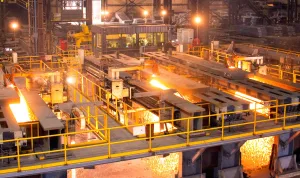What are the implications of changes in metal consumption patterns?

What are the implications of changes in metal consumption patterns?
In the intricate tapestry of the metal industry, consumption patterns play a pivotal role in shaping market dynamics, influencing supply-demand dynamics, prices, and trade flows. As global economies evolve, so too do consumption patterns, driven by factors such as economic growth, technological advancements, and shifting consumer preferences. In this article, we delve into the implications of changes in metal consumption patterns, exploring the multifaceted impacts on the metal market landscape and the strategies employed by market participants to adapt to these shifts.
- Economic Growth and Industrialization: Changes in metal consumption patterns are often closely linked to broader economic trends, particularly economic growth and industrialization. As economies develop and industrialize, demand for metals tends to rise, driven by increased infrastructure development, construction activity, and manufacturing output. Conversely, economic downturns or structural shifts can lead to fluctuations in metal demand, impacting prices and market dynamics. Understanding the relationship between economic growth and metal consumption patterns is essential for market participants to anticipate trends and adjust their strategies accordingly.
- Technological Advancements and Innovation: Technological advancements and innovation are key drivers of changes in metal consumption patterns, as new technologies and applications emerge, creating demand for specific types of metals. For example, the growing adoption of electric vehicles (EVs) has fueled demand for battery metals such as lithium, cobalt, and nickel, while the proliferation of renewable energy technologies has increased demand for metals used in solar panels and wind turbines. Keeping abreast of technological trends and innovations is crucial for market participants to identify emerging opportunities and capitalize on shifting consumption patterns.
- Environmental and Sustainability Considerations: Environmental and sustainability considerations are increasingly shaping metal consumption patterns, as governments, businesses, and consumers prioritize environmentally friendly and sustainable practices. The transition towards a low-carbon economy and the growing emphasis on circular economy principles are driving demand for recycled metals and environmentally friendly alternatives. Moreover, concerns about the environmental impact of metal extraction and processing are prompting efforts to minimize waste, improve resource efficiency, and promote responsible sourcing practices. Understanding the role of environmental considerations in shaping metal consumption patterns is essential for market participants to align their strategies with evolving sustainability trends.
- Supply Chain Resilience and Diversification: Changes in metal consumption patterns can impact supply chain dynamics, prompting market participants to reassess their supply chain strategies and diversify their sourcing options. Disruptions in metal supply chains, whether due to geopolitical tensions, trade disputes, or natural disasters, can have far-reaching implications for market participants, highlighting the importance of supply chain resilience and diversification. By diversifying sourcing locations, establishing strategic partnerships, and investing in supply chain resilience measures, market participants can mitigate risks and ensure continuity of supply in the face of changing consumption patterns.
- Market Innovation and Adaptation: As consumption patterns evolve, market participants must innovate and adapt to stay competitive in the metal market landscape. This may involve developing new products, exploring alternative materials, or adopting innovative technologies to meet changing consumer demands and preferences. Moreover, market participants must anticipate future trends and proactively position themselves to capitalize on emerging opportunities. By embracing innovation and adaptability, market participants can thrive in a rapidly changing market environment and maintain a competitive edge in the metal industry.
In conclusion, changes in metal consumption patterns have far-reaching implications for the metal market landscape, influencing supply-demand dynamics, prices, and trade flows. By understanding the drivers of these changes and adopting proactive strategies to adapt to shifting consumption patterns, market participants can navigate the complexities of the metal market landscape and capitalize on emerging opportunities in an increasingly dynamic and competitive environment.



